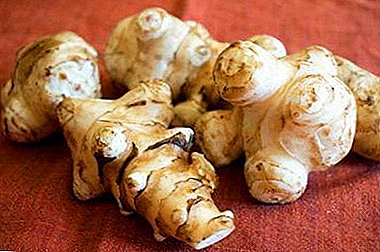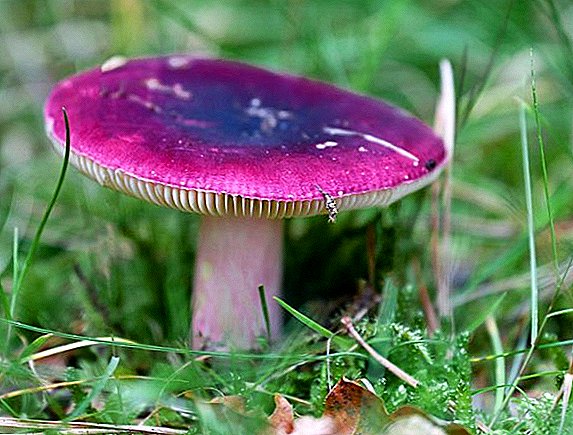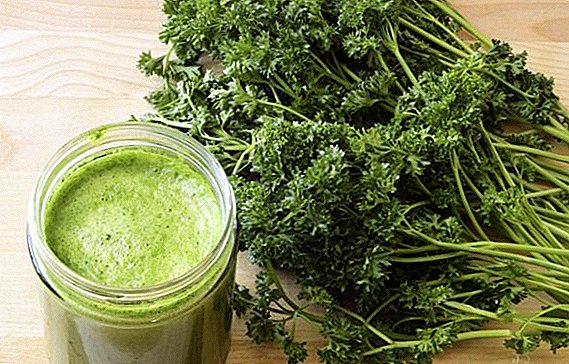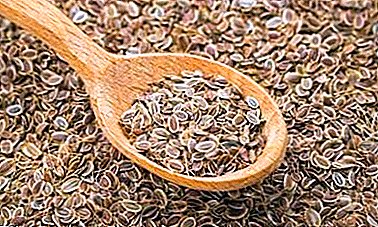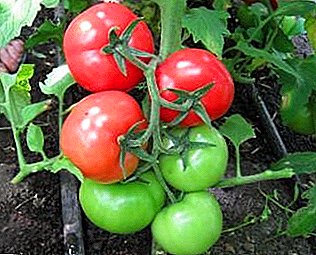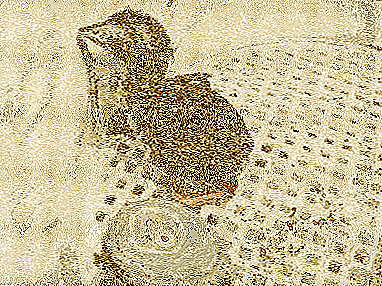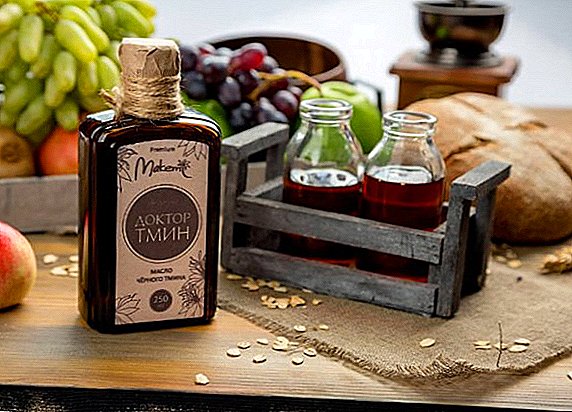 If we are asked to name a few of the most famous types of mushrooms - quickly, without thinking - probably along with the white, fly agaric, chanterelle and mushrooms, we recall brown boletus and aspen mushrooms, familiar to us from childhood fairy tales. But what do we know about these mushrooms, besides the fact that they grow under the trees of the same name, and what exactly the girl Masha collected them before getting lost in the forest?
If we are asked to name a few of the most famous types of mushrooms - quickly, without thinking - probably along with the white, fly agaric, chanterelle and mushrooms, we recall brown boletus and aspen mushrooms, familiar to us from childhood fairy tales. But what do we know about these mushrooms, besides the fact that they grow under the trees of the same name, and what exactly the girl Masha collected them before getting lost in the forest?
Boletus mushroom: description
Representatives of the mushroom kingdom, having a porous hymenophore, such as boletus, whites, and polish, form a family of species under the common name Boletae, numbering about 1300 species according to some sources. Within this family, according to the classification of certain traits, scientists distinguish the genus Obabok (Latin name Leccinum, Leccinum), numbering about 25 representatives under the common names of boletus and boletus.
Did you know? For a long time, scientists could not come to a common opinion on the question of the belonging of mushrooms to the animal or plant world. The content and composition of proteins, these amazing organisms more to animals, and carbohydrates and minerals are more like plants. All disputes were settled only in 1960. The compromise was the recognition of the mushroom kingdom separate from animals and plants.All members of the genus Leccinum live in close proximity to coniferous and deciduous trees. Most species have settled in the forests of the temperate climate zone, but some of them can be found even in subtropical and subpolar regions. The main differences of the form are a large, smooth, slightly velvet to the touch cap of a hemispherical shape of muted brown shades, always matte, more light in young little pubs.
Learn how to dry oyster mushrooms, pickle chanterelles, freeze mushrooms, wild mushrooms, chanterelles, oyster mushrooms and white mushrooms.The massive tubular hymenophore of a white-grayish color easily separates from the cap and darkens with the age of the fungus. Scaly or fibrous stem, dense, cylindrical, sometimes long. The flesh is white, dense, stained at the cut, then becomes black during temperature treatment. Practically all representatives of this species (with the exception of the gall fungus) are tasty edible mushrooms of the 2nd category.
A variety of types of boletus
The Russian name "boletus" refers only to some types of boletes, namely, to the species of boletus ordinary (Leccinum scabrum), which form mycorrhiza directly with a birch tree. Other types are more correct to call it a pub.
Meet with edible types of mushrooms.In our forests you can find various types of boletus. On the territory of the former USSR, in the temperate climate zone, there are about ten varieties of habitat suitable for human consumption. Among the most notable should be called boletus ordinary, gray, harsh, rosy.
Harsh
Boletus harsh (in some sources - hard) is not a very common species. Perhaps this is one of the most valuable representatives of its kind. He has a gray-brown hat of warm shades, darker with age. The leg of this obabka is thick, massive, cylindrical, at an early age covered with numerous small scales, which disappear with age. The mushroom has excellent taste, thick mushroom flavor and can be used in the preparation of the first and second courses. For long-term storage, drying or freezing is used. 
Gray
Boletus gray (grabovik) - the most common of the pubs. It has a large (at mature age) cap up to 15 cm in diameter, slightly wrinkled, dry to the touch, with predominant shades from dark olive to brownish brown.
Important! The second name of the species has a somewhat ominous sound, but it is written in "a" and not in "o", and has nothing to do with the coffin, grave, and death. Hornbeam, as it is known, is a tree of the birch family, with which this species often forms mycorrhiza (a stable link between the mycelium of the fungus and the root system of higher plants).In dry weather, the peel of the cap of a mature mushroom is often cracked. Dense pulp has excellent taste, on the cut white, when in contact with air becomes purple-gray color, then with time it turns from dark blue to black. The cut mushroom quickly becomes useless, therefore young and fresh copies should be sent to the basket.

Ordinary
The main feature of common boletus is a long leg, which can reach 20 cm in height. Mushroom, settling on a forest clearing or edge, as if trying to stretch out over the grass and substitute the sun with its large hemispherical hat of a bright brown color with a shade from gray to brown. The flesh on the cut is white, dense, sweetish in taste, darkens during processing. For use in food, young not overripe mushrooms are recommended. 
When to collect
All of the above types of boletus can form fruit bodies from late May to mid-November, up to the first frost. Periods of sustained fruiting: August - October. However, experienced mushroom pickers always predict the time of appearance of the first representatives of the boletus depending on many conditions: whether the past year was “mushroom” (as they say, year is not necessary for the year), to what extent the last summer was arid, and how frosty the past winter was. Again, it is known that periods of high mushroom yields, in a certain pattern, alternate with periods of complete absence of fungi.
Did you know? The people still preserved the belief that too mushroom year portends war. Perhaps this is a coincidence, but in the fall of 2014, Ukrainian mushroom pickers were returning from a "quiet hunt" with truly unprecedented yields ...Many experienced mushroom pickers, among other things, know their own, only known mushroom sites for them, visiting which, with certainty, can say whether it is worth going on a quiet hunt, or, as they say, “no luck”. In the process of collecting should be remembered that boletus - a very "vulnerable" mushroom. As a result, it deteriorates very quickly. Therefore, it is desirable to collect only fresh young specimens. An overripe mushroom with a large cap and a damp, strongly darkened hymenophore (lower tubular portion of the cap) is unlikely to live to the preparation stage and is most likely to be thrown away.
 Lay the found boletins should be separated from other types of mushrooms in a tough, "breathing" capacity, which does not allow mashing the harvest during the harvest. Wicker baskets made of natural or artificial materials (wicker or plastic rods) are ideal for this, wide buckets can be used, however plastic (garbage) bags are completely unsuitable for this purpose.
Lay the found boletins should be separated from other types of mushrooms in a tough, "breathing" capacity, which does not allow mashing the harvest during the harvest. Wicker baskets made of natural or artificial materials (wicker or plastic rods) are ideal for this, wide buckets can be used, however plastic (garbage) bags are completely unsuitable for this purpose.It will be interesting to learn how to distinguish pale toadstool and poisonous mushrooms growing on trees, from edible waves and boletus.It is also important not to forget that a mushroom is only a fruit body of a huge organism, a mycelium, which can be easily damaged as a result of improper collection. To avoid this, the find should be cut with a sharp knife as close to the ground as possible, or carefully “twisted” like a screw in one and a half or two turns. Recently, the second method, the majority of specialists mycologists considers more humane.
Places of growth
All greengrass grows in mixed deciduous forests in temperate climates of the entire northern hemisphere of the continent, prefer places with well-moistened and sun-warmed soil. Depending on the species, they form mycorrhiza with birch, aspen, hornbeam, white poplar, etc.
Did you know? The largest boletus in the world was found in the Tomsk region of the Russian Federation as a mushroom picker with the last name King appropriate to the occasion. The weight of the find was 2.4 kg, the cap diameter was 360 mm, and the leg length was 280 mm. Interestingly, with such impressive sizes, the pub was in excellent condition, was not damaged by worms and could well make a full-fledged dinner for a small family.
 Boletus ordinary settles in mixed (with birch) forests, young birch groves, in the grass; there are both single specimens and small groups. Boletus harsh prefers forests with aspens and white poplars. Gray bolepot is more common in beech forests mixed with hornbeam, poplar forests, sometimes on the edges around birch trees.
Boletus ordinary settles in mixed (with birch) forests, young birch groves, in the grass; there are both single specimens and small groups. Boletus harsh prefers forests with aspens and white poplars. Gray bolepot is more common in beech forests mixed with hornbeam, poplar forests, sometimes on the edges around birch trees.False boletus
Another representative of the bolt - gall mushroom (false boletus). In some sources, it is defined as poisonous, but it would be more correct to call it inadequate due to unbearably bitter taste. So bitter that even worms do not eat it! Indeed, to get a serious poisoning with this mushroom, you need to use it too much, which is very problematic because of its taste. In this case, the bitterness will not be able to get rid of in any way. Any processing of these mushrooms (cooking, frying, etc.) only enhances this taste.
Important! If at least one piece of false boletus casually gets into the main course along with other, “good” mushrooms, you will inevitably get the result in the form of a fly in the ointment in a barrel of honey.Perhaps this is all that is to be feared in the case of the gall mushroom - false boletus. In the shape of the legs and caps, the gall mushroom is almost indistinguishable from ordinary boletus. External distinctive features - this is the color of the cap, in which there are greenish-yellow poisonous tones. Thanks to this, the mushroom always catches the eye immediately, like the handsome Amanita. The lower part of the cap has a pink or dirty pink shade (in contrast to the "real" fungus, in which it is white). The pulp of the gall fungus is cut pink and eventually turns red. The bad news is that for an inexperienced mushroom picker, in the process of quiet hunting, it is easy to confuse the false boletus with the usual high-quality mushroom. The good news: the main drawback of this mushroom - bitterness - is, in fact, the main distinguishing feature by which it is separated from the "real" boletus. Do not be afraid to slightly lick the mushroom at the cut of the leg - believe me, everything will become clear to you right away. All true boletus on the cut have a pleasant sweetish mushroom taste, without a shadow of bitterness.
A lot of vitamins in themselves have mushrooms aspen mushrooms.
Composition
In the pulp obabka present:
- proteins - 35%;
- fats - 4%;
- sugar (in the form of mono - and disaccharides) - 14%;
- carbohydrates - up to 25%;
- vitamins: C, B1, B2, E, D, PP;
- micro- and macronutrients: sodium, magnesium, calcium, potassium, iron, phosphorus and manganese;
- water.
Did you know? Natural mineral selenium contributes to the restoration of the human immune system, due to which, as studies show, the risk of developing cancer and other systemic diseases is significantly reduced. And one of the richest sources of selenium are mushrooms.
 Calories (per 100 g of flesh) - 20 kcal.
Calories (per 100 g of flesh) - 20 kcal.Beneficial features
The nutritional value against the background of low calorie content is the main advantage of mushrooms, which allows them to be used in various diets designed for overweight people, as well as patients with diabetes. The proteins present in the stock of boletus boletus contain all the amino acids essential for humans and, in addition, a number of amino acids that contribute to the rapid recovery of an organism depleted due to an infection. From this point of view, this kind of products are a good substitute for meat for those who practice vegetarianism.
Read also about the fungi family - russia.The beneficial properties of dubs should also include the high ability to absorb toxins in the human gastrointestinal tract. Due to the presence of so-called "dietary fibers" in the fiber composition of boletus, the molecules of harmful substances in the digestive process are bound and removed from the body. For medicinal purposes, the fodder of the pub is mainly used in traditional medicine. On its basis, tinctures are prepared that help with kidney diseases, dysbacteriosis, diseases of the gastrointestinal tract, etc.

Cooking rules
Boletus mushrooms have excellent taste and are great for cooking any food and use in a wide variety of variations. They can be salted, pickled, fried and boiled, and for long-term storage, drying or dry freezing is suitable.
Important! Experienced housewives know that dry and frozen mushrooms have a much richer flavor than fresh ones.Before cooking boletus, it must be cleaned. If you are going to dry or freeze the mushrooms, they should not be wetted; in all other cases, the harvest should not just be washed well, but ideally soaked in slightly warm (preferably running) water for several hours. This preliminary procedure is needed for two reasons: first, the mushrooms will then be better cleaned, secondly, some of the harmful substances that are present in the product (meaning not mushroom poisons, but rather nitrates and other industrial waste), will stay in the water. It is very easy to clean boletus mushrooms, the main thing is to do it as quickly as possible, until the mushrooms have spoiled. Unlike oil, where you need to remove the adhesive film on the cap, after which you wash your hands for a long time and painfully, or, say, some types of ryadovka, "with the head" hiding in the sand, which is clogged up in plates and does not want to go out, our elite beauties almost never truly dirty, and cleaning them does not require much effort.
If a dried leaf or blade of grass nevertheless stuck to the hat, it is enough to scrape it slightly with a knife, and accumulated dust (it can be present if the crop was gathered on the edge near the city, however, it is better to leave such mushrooms where they grew) simply rinse or rub wet rag. We examine each specimen for damage by worms, rot, or other defects, we sort by age and size, and decide what to do next.  It is best to separate the leg from the cap and lightly scrape it with a knife to finally clean it. But if you are sorry to destroy the beauty of a small elastic handsome, you can leave it whole. Worm copies should not be thrown away. Soak them for a couple of hours in cold water, adding to it table salt at the rate of 2 tablespoons per liter, then just cut and remove the damaged areas.
It is best to separate the leg from the cap and lightly scrape it with a knife to finally clean it. But if you are sorry to destroy the beauty of a small elastic handsome, you can leave it whole. Worm copies should not be thrown away. Soak them for a couple of hours in cold water, adding to it table salt at the rate of 2 tablespoons per liter, then just cut and remove the damaged areas.
Important! Regardless of which dish you are going to cook, boletus eel must be boiled beforehand. The heat treatment time is at least 40 minutes, and the water in which the mushrooms are boiled must be changed at least once (drain and pour clean, after washing the mushrooms).Of course, we are talking about elite mushrooms, which theoretically can be fried immediately, without prior cooking. The dish will certainly be tastier and more aromatic. Nevertheless, we recommend not to neglect the above precaution, as the state of the environment in the world does not allow us to speak of the absolute safety of forest mushrooms, even if they are obviously edible.
If you decide to cook soup from boletus mushrooms, use third water for this (double pour the broth and pour clean water). For frying, boiled mushrooms are crushed to taste, and then fried in a mixture of vegetable and butter, without being covered with a lid (otherwise they will turn into porridge). Before shutting down, if desired, you can add sour cream.  For pickling, boiled pills are placed in a prepared container (wooden barrels are best, but glass or ceramics are also suitable) in layers, richly sprinkled with salt, fresh greens and spices to taste. Then put under pressure in a cool dark place for a month. It is worth noting, however, that salting and pickling are not very suitable for the pub from the point of view of organoleptics (this is rather a recipe for plate, for example, bulkhead).
For pickling, boiled pills are placed in a prepared container (wooden barrels are best, but glass or ceramics are also suitable) in layers, richly sprinkled with salt, fresh greens and spices to taste. Then put under pressure in a cool dark place for a month. It is worth noting, however, that salting and pickling are not very suitable for the pub from the point of view of organoleptics (this is rather a recipe for plate, for example, bulkhead).
Did you know? Worms are the eternal enemies of edible mushrooms. But it turns out that the opposite situation exists in nature: there are mushrooms that eat worms! They form a mycelium rings, as if weaving a kind of network. Trapped by a worm, this amazing predator, like in a Hollywood horror film, slowly devours and digests during the day!Marinating is one of the most advantageous (and, by the way, safest) ways of cooking the pastry. Marinated mushrooms are prepared like this. For a liter of water, take two tablespoons of salt, four tablespoons of sugar and two tablespoons of 9 percent vinegar. Brine of water, sugar, salt and spices (bitter peppercorns, allspice, cloves, mustard seeds, etc.) is boiled for 10 minutes. В стерильные банки закладываются извлеченные из кипящей воды грибы, одновременно туда же добавьте несколько зубчиков чеснока, разрезанных пополам и, по желанию, пару-тройку долек перчика чили, затем в грибы заливается горячий рассол, в конце добавляется уксус, после чего банка закатывается, переворачивается вверх дном, накрывается полотенцем и оставляется до полного остывания. На три литра отварных грибов понадобится примерно 1,3 литра рассола.
Contraindications and harm
From contraindications to the use of this type of mushrooms should be noted, perhaps, only the individual intolerance of the elements that make up the pulp. Caution should be taken boletus (however, like any other mushrooms) for people with severe pathologies of the liver and kidneys. However, knowing that you have such diseases, it will never be superfluous to consult with your doctor.
Very useful to eat such mushrooms as: pig, cep, boletus, boletus and champignons.Among the negative qualities of this type of product is the ability of mushrooms, like a sponge, to absorb all the harmful and toxic that is in the soil and air. It is for this reason that even such well-known and edible mushrooms as boletus mushrooms, in principle, can be poisoned.
Important! Children under six years old forest mushrooms are absolutely contraindicated! And it's not just in the danger of poisoning: this food is quite heavy for the child's body due to the high content of dietary fiber, which makes it difficult for other beneficial micro and macro elements to be absorbed into the blood.
Storage rules
You always want to save the mushroom harvest for a long time. It is quite possible to do this, but only under one condition: the freshly harvested crop must be processed literally immediately after you return from a "quiet" hunt. Forest mushrooms can not be stored even in the refrigerator, otherwise you have every chance of getting serious intestinal poisoning. In the extreme case, pour in the water produced, in this form the crop will survive to the next morning, especially since, as mentioned above, it is recommended to do this if you are not going to dry or freeze the mushrooms.  For short-term storage, cleaned, chopped and boiled boletus boletus should be well rinsed in running water for 15–20 minutes, filled with clean water and refrigerated. It is undesirable to use metal containers (even stainless steel) for storing semi-finished products. For 1-2 days, this semi-finished product can be marinated or used slices for the preparation of second courses. In all other cases, a full-fledged preparation. This can be marinating, salting, pickling, processing into mushroom caviar or mushroom powder, as well as freezing.
For short-term storage, cleaned, chopped and boiled boletus boletus should be well rinsed in running water for 15–20 minutes, filled with clean water and refrigerated. It is undesirable to use metal containers (even stainless steel) for storing semi-finished products. For 1-2 days, this semi-finished product can be marinated or used slices for the preparation of second courses. In all other cases, a full-fledged preparation. This can be marinating, salting, pickling, processing into mushroom caviar or mushroom powder, as well as freezing.
Important! With all its excellent taste, the pubs, as a rule, have a not very pronounced mushroom flavor (in many recipes of mushroom dishes it is even recommended to cook boletus mixed with other mushrooms). For this reason, the mushroom powder from boletus makes no sense.Pickled fish rolled in a sterilized jar can be stored even at room temperature for up to one and a half years. It is advisable to use self-tightening caps with an internal coating. Freezing allows you to save mushrooms up to a year, if the temperature in the freezer is at least 15-18 degrees of frost. It is possible to freeze both washed and peeled fresh whole mushrooms, and sliced, pre-boiled 10-15 minutes. After defrosting the product can be used for cooking fried, stewed mushroom dishes, cooking soups. Of course, re-freezing is completely unacceptable. Drying is another way to preserve the harvest for a long time. A properly dried mushroom can retain all its beneficial properties, nutritional and taste qualities from one to two years when stored in a well-ventilated room with constant humidity and far from strong foreign odors. For this ideal small pantry, in which dried mushrooms are laid or hung, pre-placed in paper bags or fabric bags. Dried mushrooms, as a rule, after soaking, are used to make soups.
Familiarize yourself with such mushrooms as: white fillings, aspen weed, chanterelles, satanic mushroom, aspen mushroom, morel and black truffle.So, we see that Masha from a fairy tale is not in vain to go into a dark forest. Boletus mushrooms are, indeed, those mushrooms, for the sake of which it is worth getting up early and wandering through the forest thickets all day. Their undoubted advantages include a bright appearance that makes it easy to detect yourself, the absence of truly dangerous twins and excellent taste.




